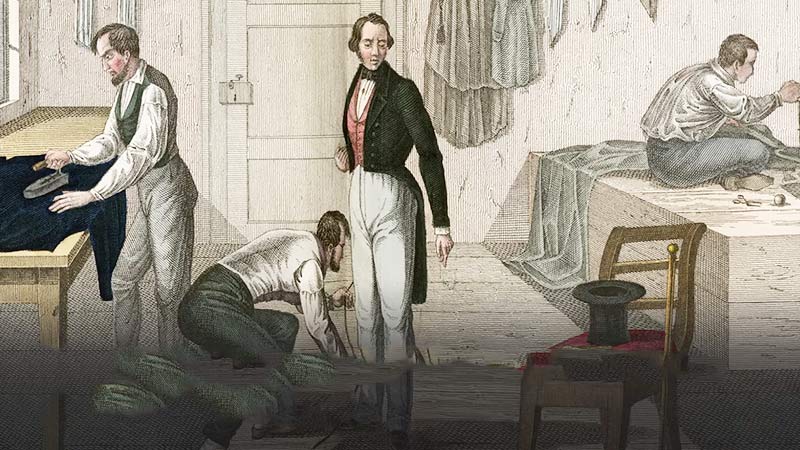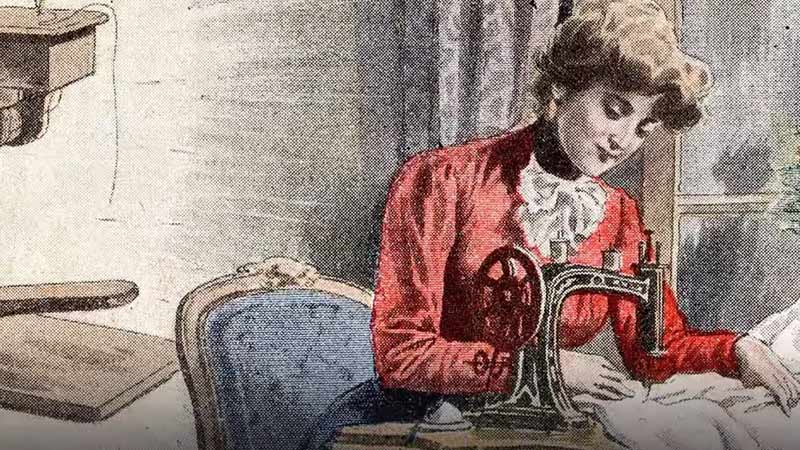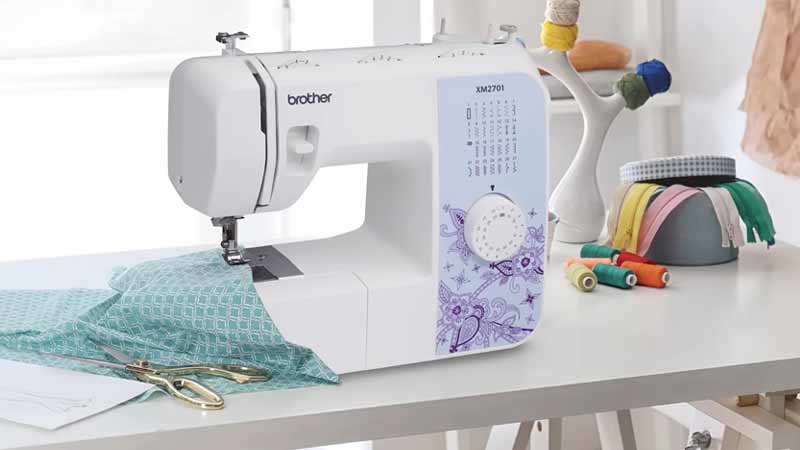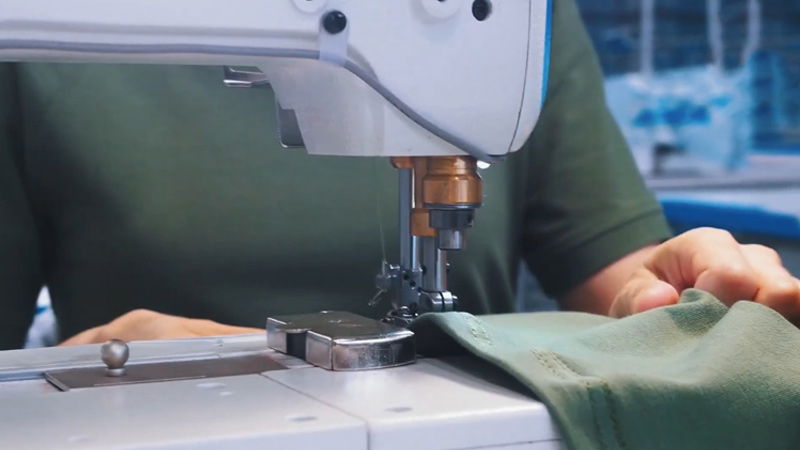Sewing, often associated with practicality and utility, carries a rich history deeply intertwined with artistry. But is it truly considered a fine art? This intriguing question sparks a dialogue that transcends the realms of mere functionality.
Sewing transcends the mere act of stitching fabrics; it is a manifestation of creativity, skill, and self-expression. From intricate embroidery to avant-garde fashion design, sewing has proven to be a versatile canvas for artistic expression.
As many of us are confused about whether is sewing an art, or not, we dig into the fact a little. In this exploration, we will delve into the origins of sewing in arts, its evolution as an art form, and the ways in which contemporary artists have elevated it to a level of true artistic mastery.
Join us as we unravel the intricate threads of sewing’s artistic identity and discover the beauty woven into every seam.

Is Sewing Considered A Fine Art?
Sewing is generally not classified as a fine art but rather falls under the category of applied or decorative arts. Still, many of you are confused about whether is sewing considered art or not. Here are four points explaining why:
Functional Purpose
Fine art is often characterized by its emphasis on aesthetic expression and conceptual depth.
Sewing, while creative and skill-based, often serves functional purposes, such as creating clothing or home textiles.
Craftsmanship and Skill
Sewing involves a high level of craftsmanship and skill, but it is more aligned with applied arts and crafts.
Fine art tends to prioritize conceptual exploration and originality over traditional craftsmanship.
Everyday Utilitarian Objects
The products of sewing, such as garments or household items, are considered utilitarian objects.
Fine art typically transcends the practical and everyday, focusing on the creation of objects with intrinsic artistic value.
Traditional vs. Contemporary Perspective
While traditional sewing may be seen as a craft, contemporary textile art blurs the lines between craft and fine art.
Artists who push the boundaries of textile work, incorporating innovative concepts and techniques, can be considered within the realm of fine art.
While sewing embodies artistic skill and creativity, its historical association with functionality and craftsmanship places it within the realm of applied arts and crafts rather than fine art.
However, contemporary artists continue to challenge these distinctions, contributing to the evolving nature of artistic categorizations.
How Sewing Was Evaluated in the Early Age?

In the early ages, sewing was not only a practical skill but also an essential and valued aspect of daily life.
The evaluation of sewing during this time was influenced by several factors:
Functional Necessity
Sewing was primarily evaluated based on its functional necessity. In ancient and medieval societies, individuals were required to create their own clothing, linens, and other fabric-based items.
Proficiency in sewing was crucial for personal and familial well-being.
Cultural and Social Significance
Sewing played a significant role in expressing cultural identity and social status.
The ability to create well-crafted garments and textiles reflected not only personal skills but also adherence to societal norms and expectations.
Apprenticeship and Tradition
Sewing skills were often passed down through generations within families or communities. Young individuals, particularly females, were apprenticed in the art of sewing from an early age.
The evaluation was conducted through the successful transfer and application of these skills.
Quality of Craftsmanship
The quality of craftsmanship was a crucial factor in evaluating sewing.
Fine stitches, attention to detail, and the ability to work with various fabrics were indicators of a skilled seamstress or tailor. The creation of durable, well-fitted garments was highly valued.
Economic Contribution
In agrarian and pre-industrial societies, individuals often produced their clothing and textiles due to limited access to ready-made goods.
The economic value of sewing was thus tied to self-sufficiency and the ability to meet basic needs without relying on external markets.
Status and Marriageability
Proficiency in sewing could impact an individual’s social status, especially for women.
In many cultures, the ability to sew was considered a desirable trait in potential brides, showcasing qualities of industriousness and domestic competence.
Artistic Expression
While practicality was paramount, sewing was also a form of artistic expression. Embroidery, decorative stitching, and the choice of fabrics allowed individuals to showcase creativity and personal style.
Fine needlework was often recognized and appreciated.
Rituals and Ceremonies
Sewing was integral to various rituals and ceremonies. Special garments, often intricately sewn, were created for weddings, religious ceremonies, and other significant life events.
The quality of sewing was closely associated with the success of these events.
In essence, the evaluation of sewing in the early ages was a multi-faceted process encompassing practical necessity, cultural traditions, social expectations, and individual craftsmanship.
The skill was essential for personal and community well-being, and proficiency in sewing was a marker of competence and cultural identity.
The Art of Sewing in the Modern Age

In the modern age, the art of sewing has evolved from a practical necessity to a diverse and dynamic form of creative expression.
Here are key aspects that define the art of sewing in the contemporary era:
Creative Freedom
Modern sewing is characterized by creative freedom. Individuals, both hobbyists and professionals, use sewing as a means of self-expression.
The range of available fabrics, patterns, and techniques allows for diverse and personalized creations.
Fashion and Individual Style
Sewing has become a way for individuals to engage with fashion on a personal level. Many people choose to sew their clothing to reflect their unique style, preferences, and body shapes.
Sewing enthusiasts often follow or create fashion trends outside of mainstream offerings.
DIY Culture
The Do-It-Yourself (DIY) movement has played a significant role in the resurgence of sewing. Many people appreciate the satisfaction of creating something with their hands.
Online platforms, tutorials, and communities foster a collaborative environment where individuals share ideas and expertise.
Sustainable and Ethical Fashion
With growing awareness of environmental and ethical concerns in the fashion industry, sewing allows individuals to participate in sustainable and ethical practices.
Creating one’s garments enables control over materials, sourcing, and production methods.
Artistic Techniques
Sewing has expanded beyond basic stitches to encompass a wide range of artistic techniques.
Embroidery, appliqué, quilting, and fabric manipulation are embraced as artistic elements, transforming garments and textiles into unique works of art.
Digital Innovation
Technology has influenced the art of sewing through digital innovations.
Computerized sewing machines, pattern drafting software, and online platforms for sharing patterns and ideas contribute to a modern sewing landscape that blends traditional craftsmanship with technological advancements.
Entrepreneurship
Many individuals turn their sewing skills into entrepreneurial ventures.
Small businesses focused on handmade garments, accessories, or custom tailoring have thrived, connecting creators directly with consumers who value craftsmanship and uniqueness.
Inclusive Sewing Communities
In the modern age, sewing communities are diverse and inclusive.
Social media platforms, blogs, and online forums provide spaces for individuals of all backgrounds and skill levels to share experiences, learn from one another, and celebrate their creations.
Art Installations and Exhibitions
Sewing has found its place in the art world, with artists creating large-scale installations, textile art, and mixed-media pieces.
Sewing is no longer confined to functional items but is embraced as a medium for fine art and contemporary art practices.
Educational Opportunities
Educational opportunities for learning sewing have expanded.
Workshops, classes, and online tutorials cater to beginners and advanced sewists alike, contributing to a continuous exchange of knowledge and skill development.
The art of sewing in the modern age is characterized by its adaptability, inclusivity, and integration with contemporary cultural and social trends.
It offers a canvas for individual creativity, fosters sustainable practices, and connects a global community of enthusiasts and artists.
What Do You Call the Art of Sewing?

Needlework is known as a handicraft, and it’s an art form that uses a needle for construction. It can be anything from traditional embroidery to quilting to patchwork.
There are many different types of needlework, so you’re sure to find something that interests you. It’s not just for women–men can also enjoy stitching items together.
If you’re new to the craft or need some tips, don’t hesitate to ask someone else–a friend, family member, or local crafter might have some advice just waiting for you.
Is Textile Art Considered Fine Art?
Yes, textile art is considered a form of fine art. Textile art involves the use of fibers, fabrics, and other textile materials to create artworks that can be both functional and purely aesthetic.
Over the years, textile art has gained recognition in the art world, and many contemporary artists use textiles as a medium for their creative expression.
Here are a few reasons why textile art is considered a part of fine art:
Creative Expression
Textile artists use a variety of techniques, such as weaving, embroidery, quilting, and felting, to create visually stunning and conceptually rich artworks.
These pieces often go beyond mere functionality, expressing the artist’s unique vision and ideas.
Aesthetic Value
Textile art is appreciated for its aesthetic qualities. Artists experiment with color, texture, and form, creating works that engage viewers on a visual and tactile level.
Textile art can be found in galleries, museums, and exhibitions dedicated to fine art.
Conceptual Depth
Many textile artists explore complex themes and concepts in their work, adding a layer of intellectual depth to the pieces.
This conceptual aspect aligns textile art with the broader goals of fine art, which often seeks to convey ideas and emotions.
Crossover with Fine Art Practices
Textile art often intersects with other fine art practices.
Artists may combine textiles with painting, sculpture, or mixed media, blurring the boundaries between traditional art disciplines and expanding the possibilities for creative expression.
Recognition in Art Institutions
Textile art is increasingly recognized and showcased in major art institutions, museums, and galleries.
Solo and group exhibitions dedicated to textile art contribute to its acknowledgment as a significant and valued form of fine art.
Art Market Presence
Textile artworks are bought and sold in the art market, contributing to the economic aspect of fine art.
Collectors and art enthusiasts appreciate and invest in unique and well-crafted textile pieces.
Influence on Contemporary Art
Textile art has had a notable influence on contemporary art practices.
Many contemporary artists incorporate textiles into their installations, sculptures, and mixed-media works, demonstrating the medium’s relevance and versatility.
Artistic Innovation
Textile artists often push the boundaries of traditional techniques, introducing innovative processes and materials.
This spirit of experimentation aligns with the innovative and exploratory nature of fine art.
Textile art is firmly positioned within the realm of fine art, celebrated for its creativity, aesthetic appeal, conceptual richness, and ability to bridge traditional craft techniques with contemporary artistic practices.
Frequently Asked Questions
What do you call a professional seamstress?
A professional seamstress is someone who makes custom clothing for women. They may also be called a dressmaker, fabrics, or mantua-maker.
Is weaving a fine art?
The contemporary artist who has taken up the painstaking labor of weaving in the digital age similarly finds themselves in dialogue with newly minted historical figures like Albers—who was instrumental in elevating the status of weaving as fine art—as well as ancient traditions that span the globe.
What is fine art textiles?
Textile arts are art and crafts that use plant, animal, or synthetic fibers to construct practical or decorative objects.
Is sewing art a fiber art?
There are many different forms of fiber art, and it is up to the artist what they choose to create. Some artists focus on creating intricate pieces of fabric or lace, while others work with simple stitches and colors. Whatever form your fiber art takes, be sure to enjoy its unique challenges.
Is sewing a craft?
Yes, sewing is considered a craft. It involves the skillful manipulation of fabrics and threads to create garments, accessories, or decorative items. It is a form of creative expression and practical artistry.
To Recap
Sewing is an often overlooked fine art, and can be very rewarding. There are many different types of sewing, from simple repairs to more intricate embroidery and quilting.
The ability to create something from nothing is a truly magical feeling, and there’s no better way to spend some time than in the company of someone else’s creation.
As we’ve explored the history, evolution, and contemporary manifestations of sewing, it becomes evident that it transcends utility to become a canvas for self-expression and cultural commentary.
The artists who wield needles and threads are, in every sense, artisans of the highest order. Sewing is, and forever will be, a fine art that stitches together the fabric of culture, history, and human ingenuity.
Leave a Reply